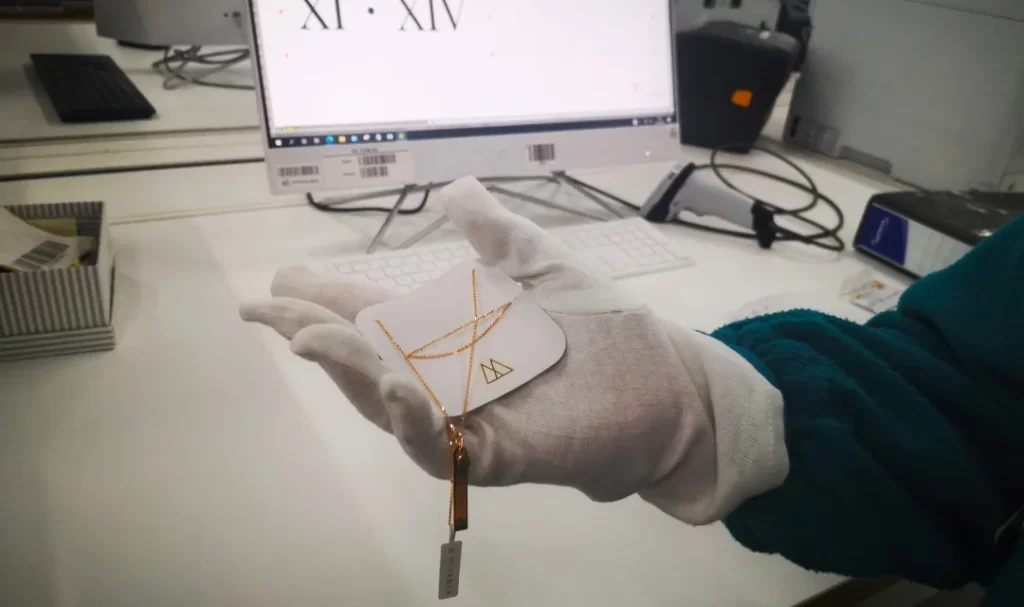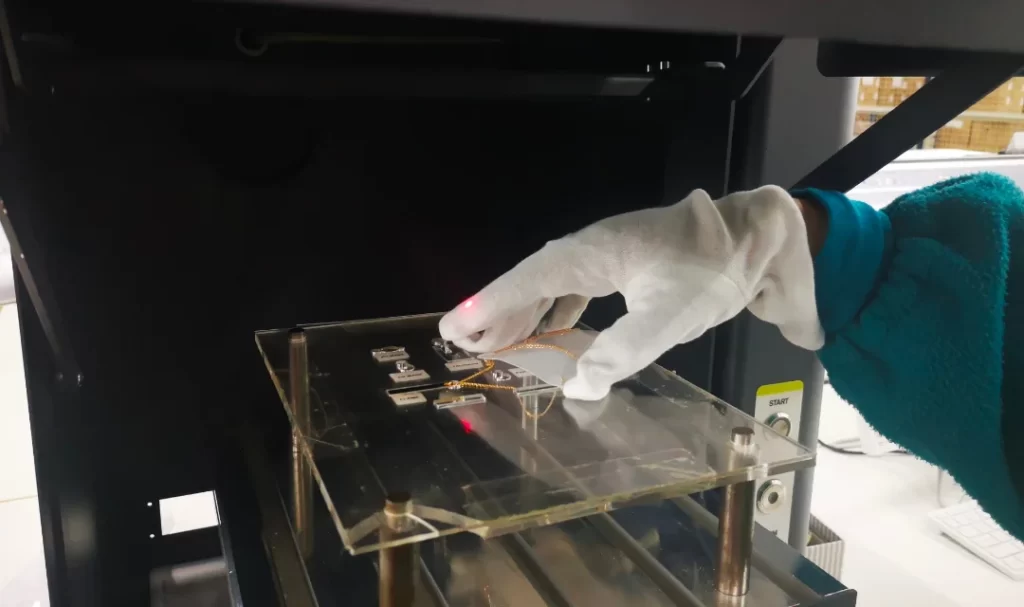The bell rings, you run to open the door and thank the delivery guy and… It is the package you had been waiting on! You open it and, WOW! We have already made an impact on the consumer.
A football shirt with their name and the number of their favourite player. Glassware engraved with their initials and those of their partner. A unique piece of jewelry that they intend to give to someone special, a trendy bag with their initials emblazoned on it, etc. Personalised objects that boost this WOW! effect which creates loyalty on the part of the consumers and offers them a unique and differentiated experience with the brand, thus increasing its value.
Customisation in eCommerce is enjoying an upsurge as a Value Added Service (VAS) seeing an annual growth rate of 20% worldwide, according to estimations published in the study published by Salesforce entitled “The State of Connected Commerce” This headway is forecast to continue to quicken over the coming years, boosted by the growing demand customers have for unique and inidivudualised products. Indeed, as this same report clearly states, 49% of consumers are willing to pay more for personalised products while 80% guarantee that it is more likely that they would turn to a brand that offers personalised experiences when shopping.
Data which underscore the fact that the personalisation of articles offers an unmissable opportunity so that brands can stand out from their competitors in such a hard-fought market, thus allowing consumers to attain greater satisfaction levels with their purchase, subsequently remaining loyal to the brand. This WOW! effect can lead to an increase in their sales by as much as 30%, according to a report issued by McKinsey & Company. Thanks to this, meaningful data can be compiled regarding their customers’ interests and preferences.
This trend is boosted by factors such as the upsurge in the use of social networking sites, which have brought into being an individual culture fostering self-expression to lead consumers to demand products that mirror their personal style. Furthermore, progress in terms of technology has facilitated brands being able to customise products on a large scale and thus make them more profitable. This is why at Logisfashion, in its role as a 3PL operator, our logistics hubs are equipped with innovations that enable this level of personalisation and help in streamlining the supply chain.
How can a product be personalised?
First, what type of personalisation can be performed as VAS? Depending on the technique used, logistics operators such as Logisfashion, who also perform this activity within the framework of the comprehensive product offered to its clients, the most commonly found are:
“Stamping: this is the most popular technique, particularly for garments of clothing, accessories or decorative articles. Amongst its advantages, its versatility comes to the fore, as this allows for a widescale variety in terms of designs, colours and styles while integrating technology such as printing, screen printing, transfers, etc.
Embroidery: the lavish touch that turns products into something unmistakable, offering them greater standing in terms of exclusivity and elegance. It is used, mainly, in garments of clothing, caps, handbag, towels etc.
“Engraving: a technique applied to a wide variety of materials, namely metals, wood, plastics or glass. This process stands out as it allows for the creation of detailed and high quality design on jewelry, ballpoint pens, keyrings, gift items etc.
Some of the main brands on the market who work with Logisfashion already provide this service. Both in fashion sector, as well as for jewelry, (PdePaola), home furnishings with engravings in wood (boxes or initialed coat-hangers) and glassware (glasses and other glassware items) or for sporting teams, plus many others.
Zara embarked upon this trend on a more general scale in 2020, when it placed on the market a range of felt handbags that allowed shoppers to add their initials. It was one of the season’s flagship products. A customisation line that Inditex expanded upon during the following years by launching it with other brands such as Lefties or Pull&Bear, with printing and embroidering for items such as handbags, toiletry bags, etc. Or, with regard to Bershka, providing the chance to personalise trousers or denim jackets through its website.
A drop in the number of returns
Personalising articles to provide an added value service has significant repercussions when reducing the need for inverse logistics, as it considerably lowers the number of returns, due to the fact that it is less probable that consumers will return them because they do not like them, or the products do not suit their needs.
Consumes who purchase personalised products display a 35% lower probability of returning them, which also has a knock-on effect on aspects such as transport costs, storage and processing of returned items, according to the study entitled “The impact of personalisation on returns in electronic commerce” undertaken by Forrester Consulting.
In short, personalisation has already become a must have for those brands who wish to stand out from the crowd and offer their clients an enhanced shopping experience. Whether it is through embroidery, engraving or printing, consumers demand one-off and exclusive products that stand out for their individuality and which makes them carriers of one the top trends in the market at the present time. The companies that follow this trend will be the major winners in the current electronic commerce sphere.



